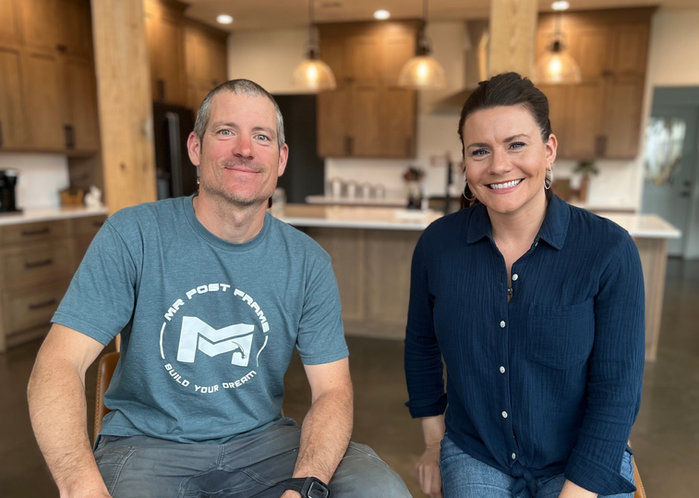Alright, welcome back to MR Post Frame. Today marks part three of our interior framing series, where we'll delve into the process of laying out and securing walls to the concrete. But before we dive into the details, a quick reminder – if you're considering designing a barndominium or a post-frame building, our team is here to assist. Back Forty Buildings is our architectural design firm. We offer custom design services along with having a wide variety of stock designs. Barndominium construction can be post frame, steel frame, or stick frame. Our team can help you decide which type is best for your situation. And for the DIY enthusiasts out there, check out our Patreon group, a community of self-builders sharing experiences, discussing various building topics, and hosting monthly live sessions.

Now, let's get back to the exciting world of interior 2x6 wall framing. To kick things off, I prefer starting with the long walls. The meticulous process involves measuring from corners and employing a laser for precise squareness. Marking the walls with an 'A' serves as a handy guide, ensuring a swift and efficient assembly process. Along the ceiling joists, I make strategic marks for proper wall alignment, and a quick check against the plans reveals any intersecting walls.
Moving on to the bottom plate layout, precision is key. Considering variations in concrete levels, I mark the lowest point and adjust stud lengths accordingly. This meticulous approach ensures a level top plate installation. Proceeding with cutting and laying out the studs, uniformity is crucial. Crowning the studs and positioning them with the crown facing up adds a layer of consistency.

Addressing potential wobbling during wall assembly, I deploy temporary supports and bracing, showcasing the importance of stability in the construction process. Securing the bottom plate with concrete anchors becomes a crucial step, emphasizing proper spacing around doorways and strategic placements every 4 to 6 feet for stability.
With one wall successfully erected, the process is repeated for additional walls. Emphasizing precise measurements and alignment, I take you through the meticulous steps, ensuring consistency and accuracy throughout the construction.

However, construction doesn't always go without hiccups. Encountering an issue with plumbing misalignment, I walk you through a practical solution – a wall shift to accommodate the tub and shower. This example underscores the flexibility required in construction and problem-solving.
But we're not done yet. The importance of caution during nailing is highlighted, with a tip to keep your hand back, avoiding potential accidents. This attention to detail ensures a smooth and safe construction process.
As we conclude part three, I offer a sneak peek into the challenges and solutions encountered during the framing process, setting the stage for the next installment. Stay tuned for part four, where we'll explore additional details such as ladders above walls, tray ceilings, blocking, and other intricacies involved in interior framing. Don't forget to subscribe, share, and join us for the next video!
Thank you,
MR Post Frame

Patreon Group:
Interested in tackling your build on your own? If you want to explore the possibility of being your GC or self-building, our Patreon membership is for you! It's a community of like-minded people offering support, discounts, Q/A, and more.